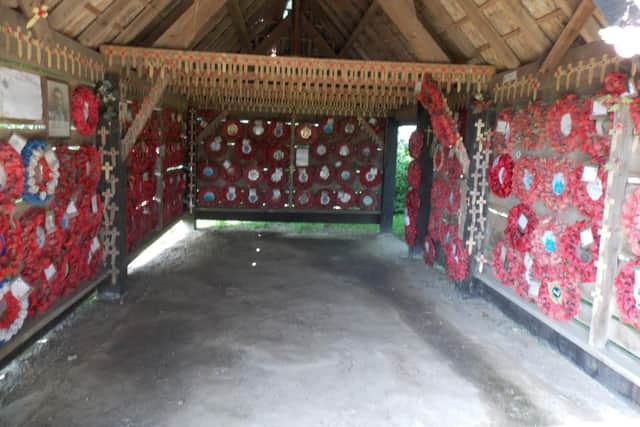The Wormhoudt Massacre and the Royal Warwickshire Regiment
and live on Freeview channel 276
Earlier this month, the country celebrated the joy of the end of the Second World War on May 8 1945.
However, this month is also the 80th anniversary of one of the darkest times in that conflict.
Advertisement
Hide AdAdvertisement
Hide AdThe team at the Fusiliers Museum in Warwick have shared the story of the Wormhoudt Massacre and the Royal Warwickshire Regiment.


Nearly half a million men of the British Expeditionary Force were deployed in late 1939 to France and Belgium as part of the defence against the expected invasion by Nazi Germany.
Forming part of the BEF were soldiers from Birmingham, Coventry and Warwickshire serving with three battalions of The Royal Warwickshire Regiment, many of whom were part time TA.
When it came in Spring 1940, the attack was swift and ferocious and the BEF found itself fighting a withdrawal back to the coast of Belgium where the miracle of Dunkirk enabled some 330,000 troops to escape to England.
Advertisement
Hide AdAdvertisement
Hide AdDuring the withdrawal, a group of soldiers from 2nd Battalion of The Warwicks was involved in one of the more heinous events in the regiment’s history.
The Wormhoudt massacre was the mass murder of 100 British and French POWs by Waffen-SS soldiers from the 1st SS Division Leibstandarte SS Adolf Hitler during the Battle of France in May 1940.
The Warwicks together with straggler groups from The Cheshire Regiment, Royal Artillery and Worcestershire Yeomanry were in defensive positions at the small village of Wormhoudt.
After delaying the German forces for more than 24 hours they were overrun. Having exhausted their ammunition supplies, the troops at this point surrendered assuming that they would be taken prisoner according to the Geneva Convention.
Advertisement
Hide AdAdvertisement
Hide AdIt was 28 May 1940 and after their capture, the troops were taken to a barn near the village.
The Allied troops had become increasingly alarmed at the brutal conduct of the SS soldiers en route to the barn, which included the shooting of a number of wounded stragglers.
There were nearly 100 men inside the small barn and soldiers from the Leibstandarte SS Adolf Hitler, threw stick-grenades into the building, killing many POWs.
The grenades failed to kill everyone, largely due to the bravery of two British soldiers, Sergeant Stanley Moore and Sergeant Major Augustus Jennings, from Rugby, who hurled themselves on top of the grenades using their bodies to suppress the force of the explosion and shield their comrades from the blast.
Advertisement
Hide AdAdvertisement
Hide AdUpon realising this, the SS called for two groups of five to come out. The men came out and were shot.
Concluding that these methods were too slow, the SS troopers simply fired into the crowded barn with their weapons. 80 soldiers were murdered and a further 9 died soon afterwards from their wounds.
Several British prisoners were able to escape and so details of the massacre survived to be told.
One of these was Private Bert Evans from Stirchley in Birmingham who was the last survivor and who died in 2013 aged 92.
Advertisement
Hide AdAdvertisement
Hide AdAfter a couple of days, the wounded survivors were found by regular German Army medics and taken to hospital.
Their wounds were treated before they were sent to prisoner of war camps for the remainder of the war.
Their sacrifice is remembered to this day by local children who lay flowers on the anniversary and by annual visits to the site every May (except this year due to Covid-19) by members of the Royal Warwickshire Regimental Association to salute their fallen predeccessors.